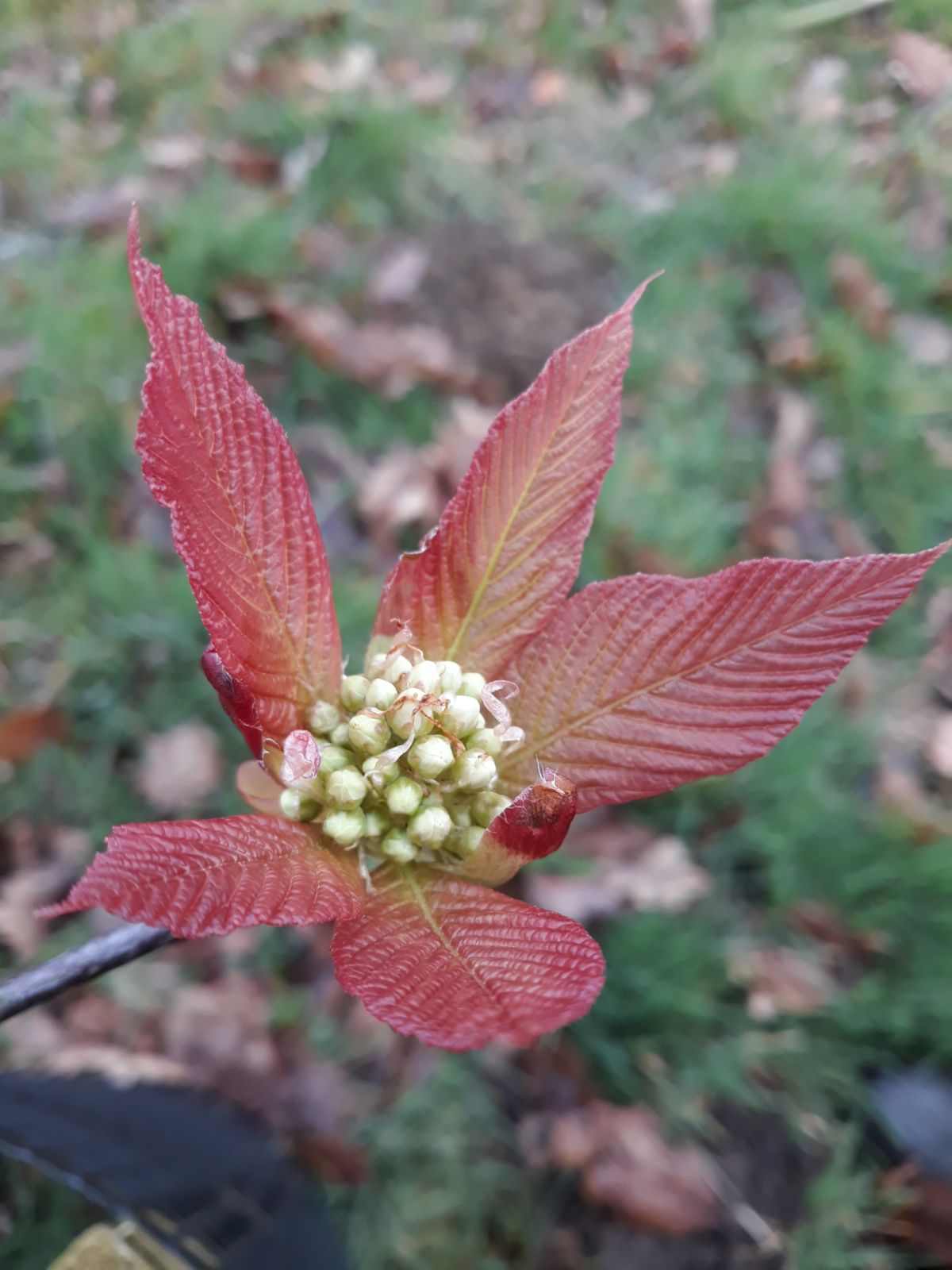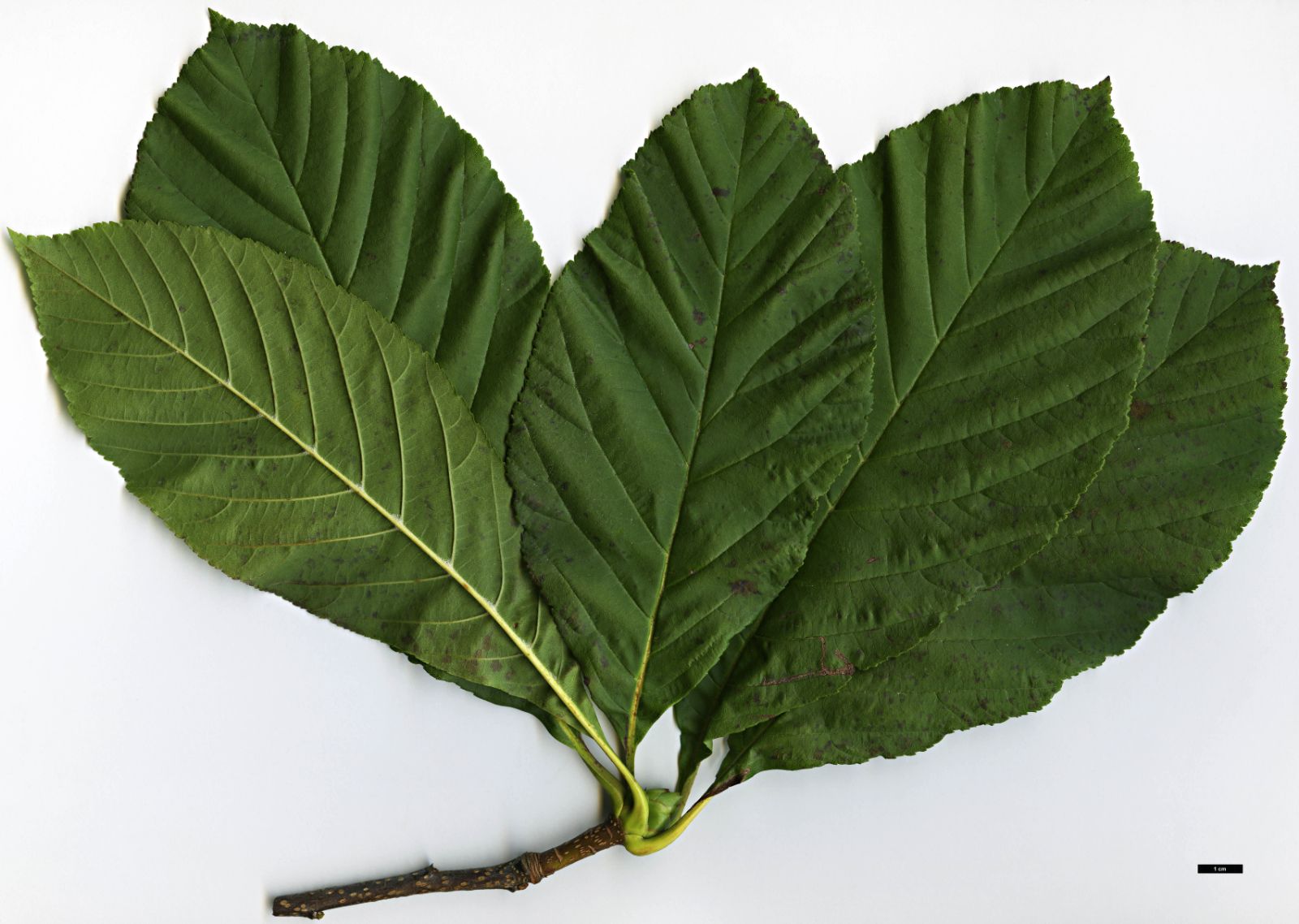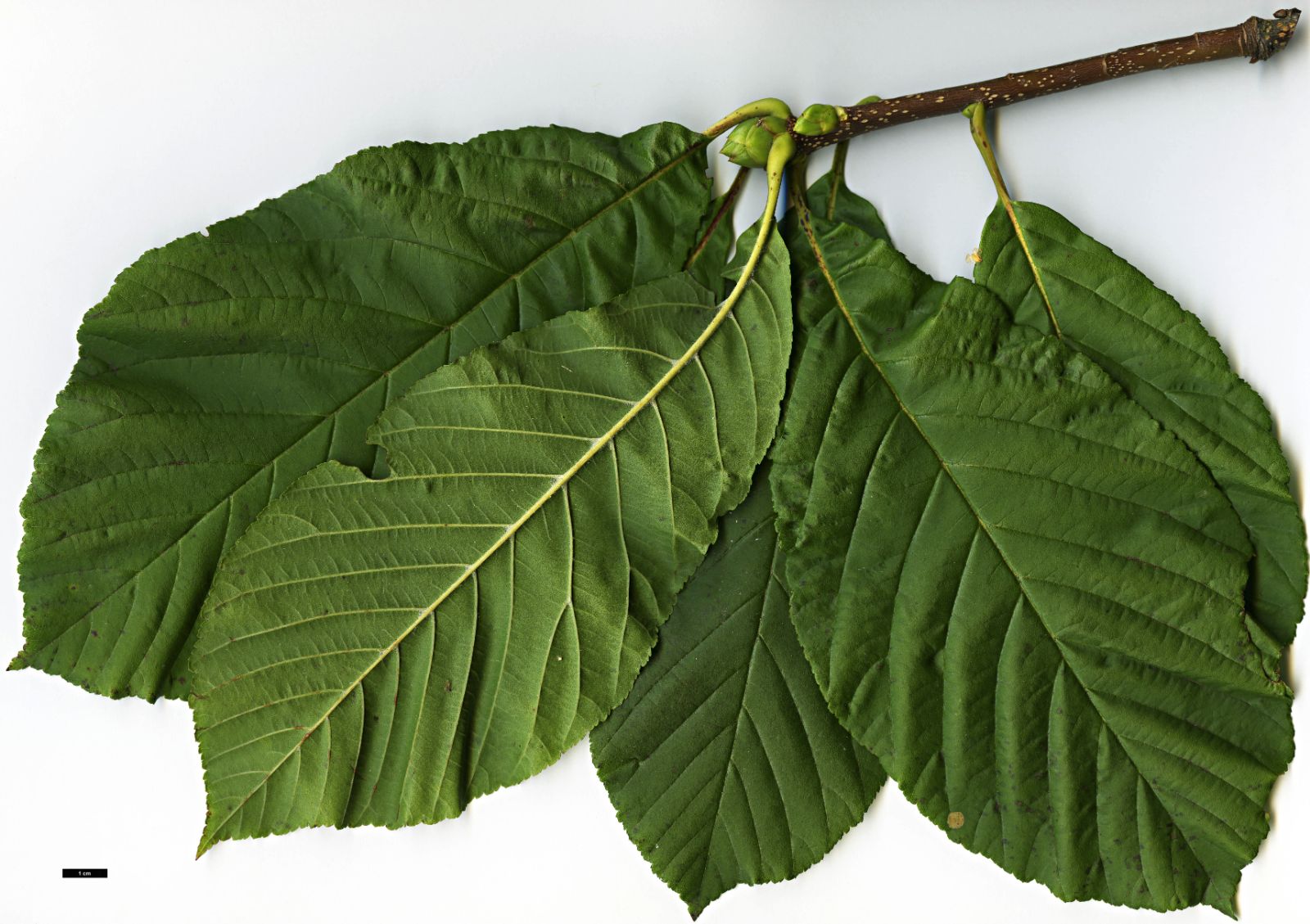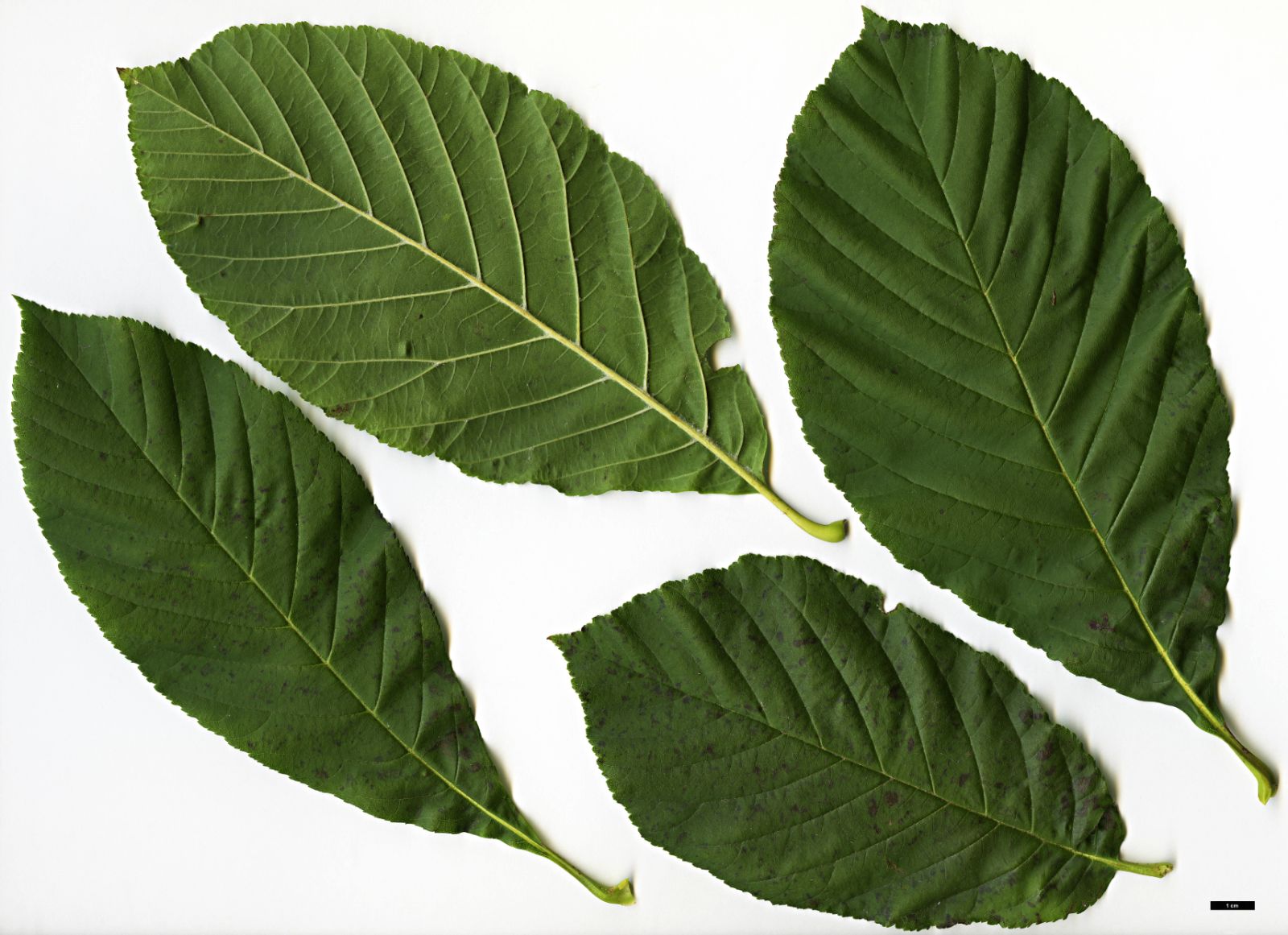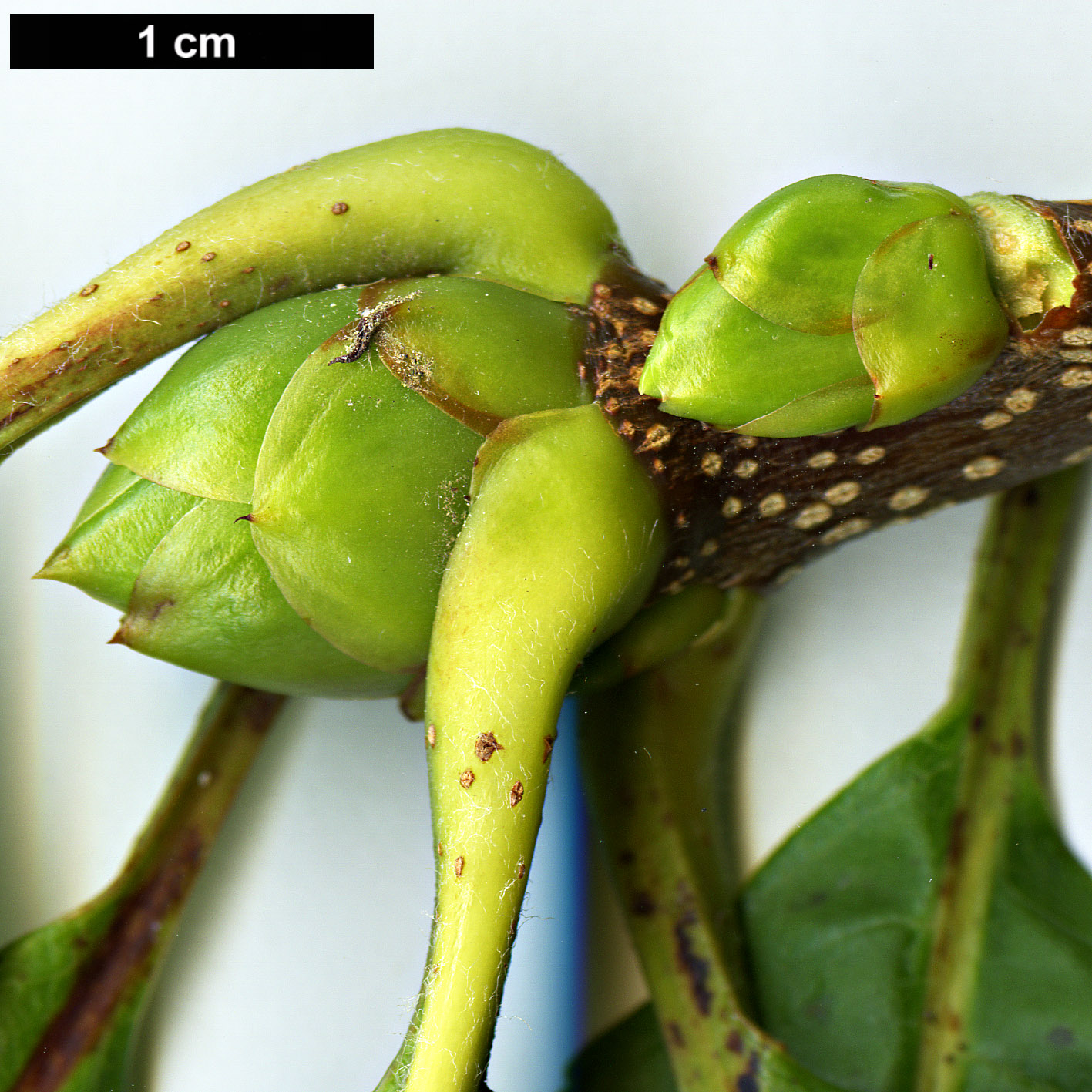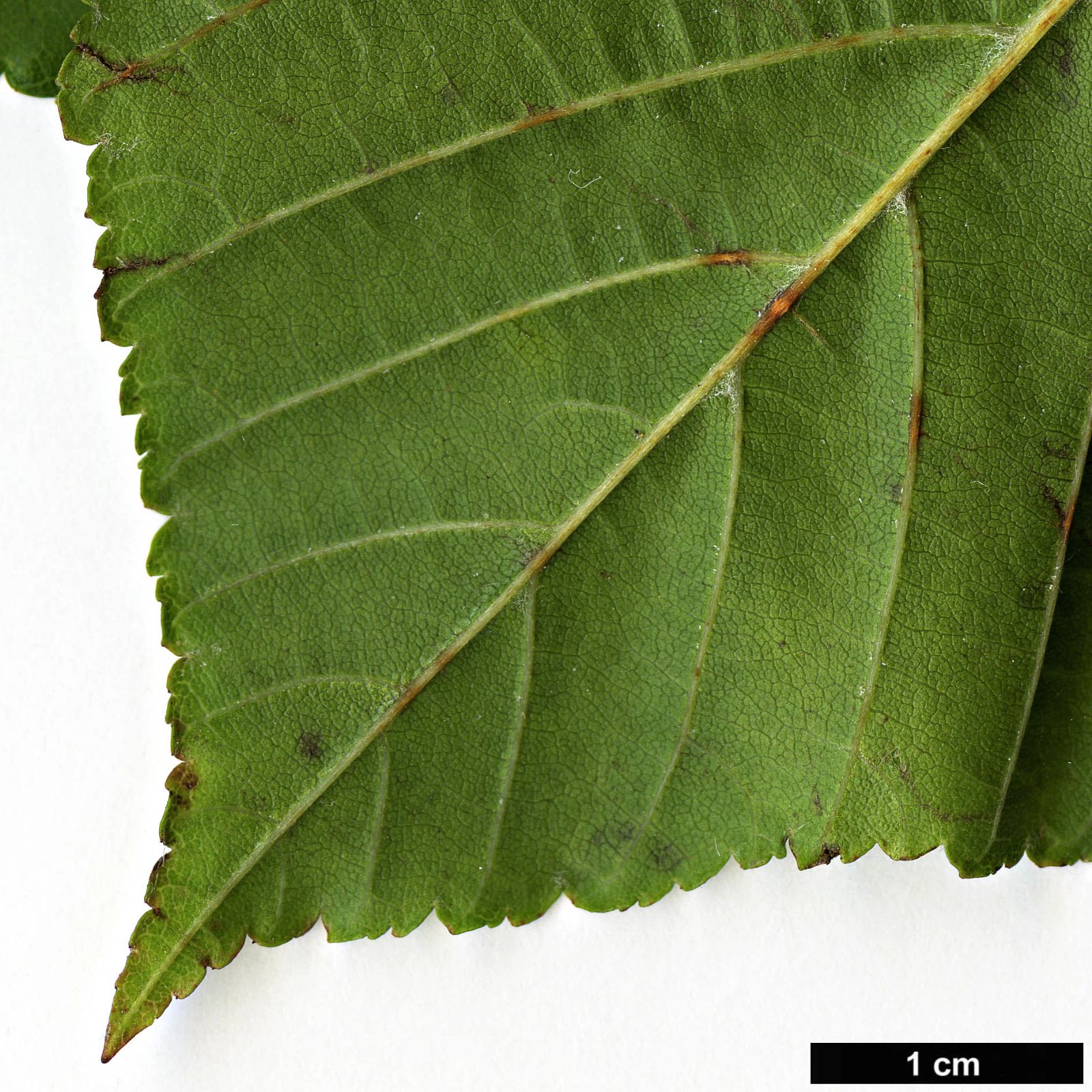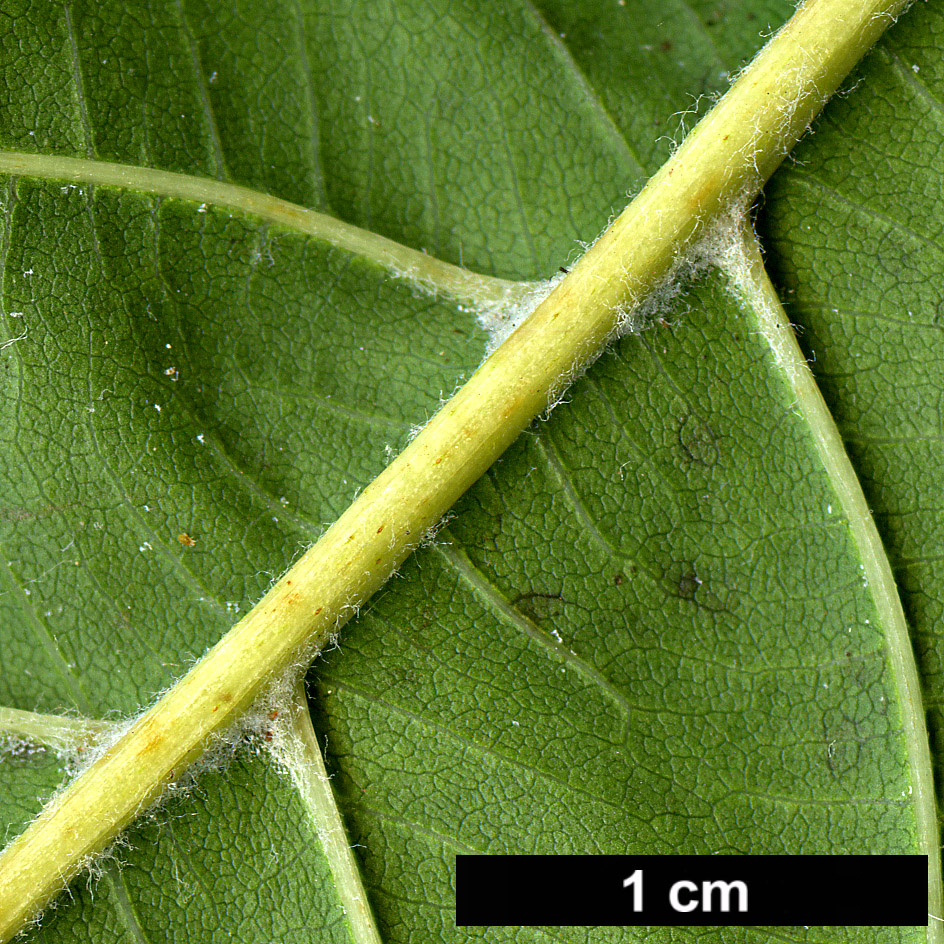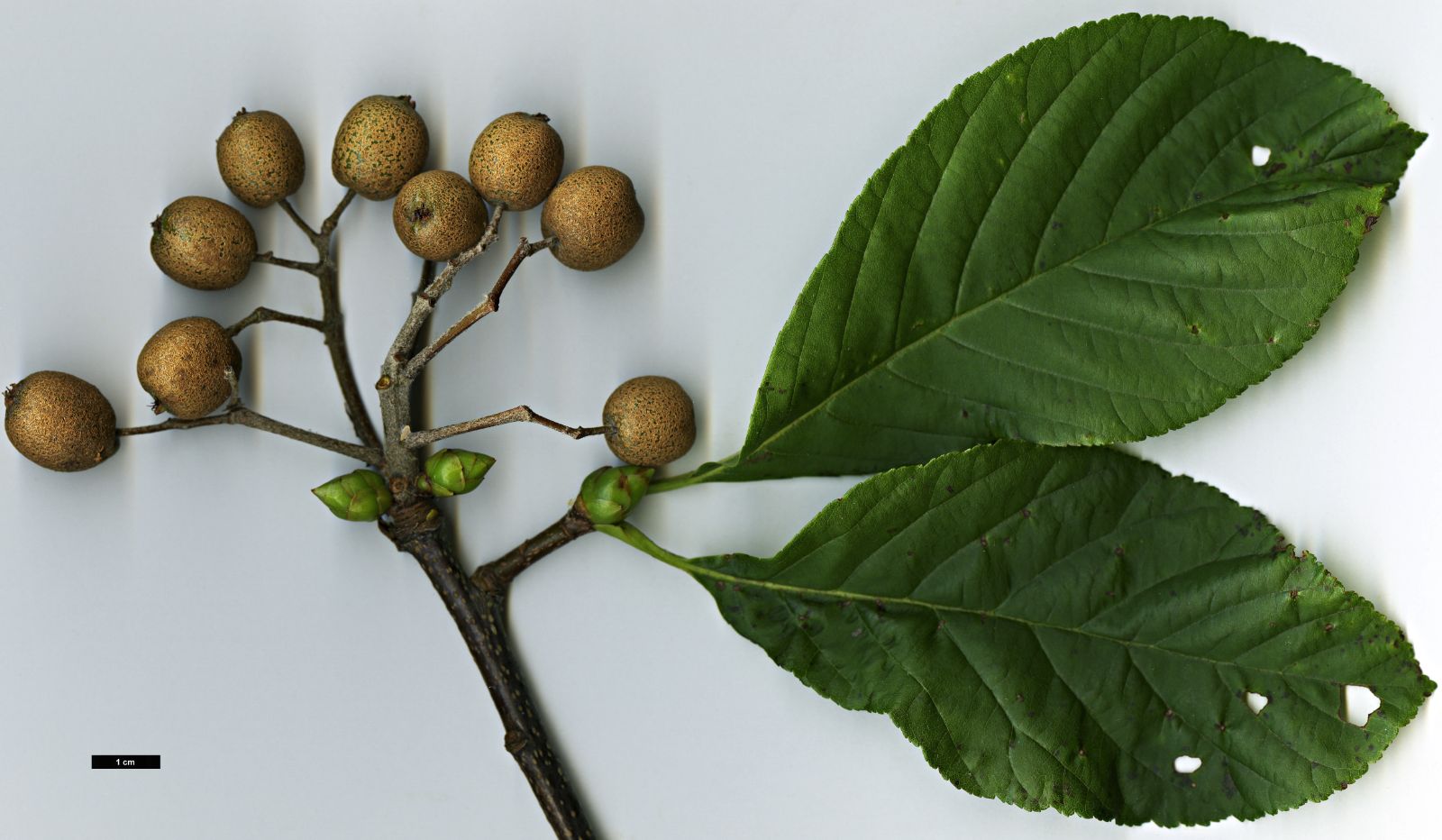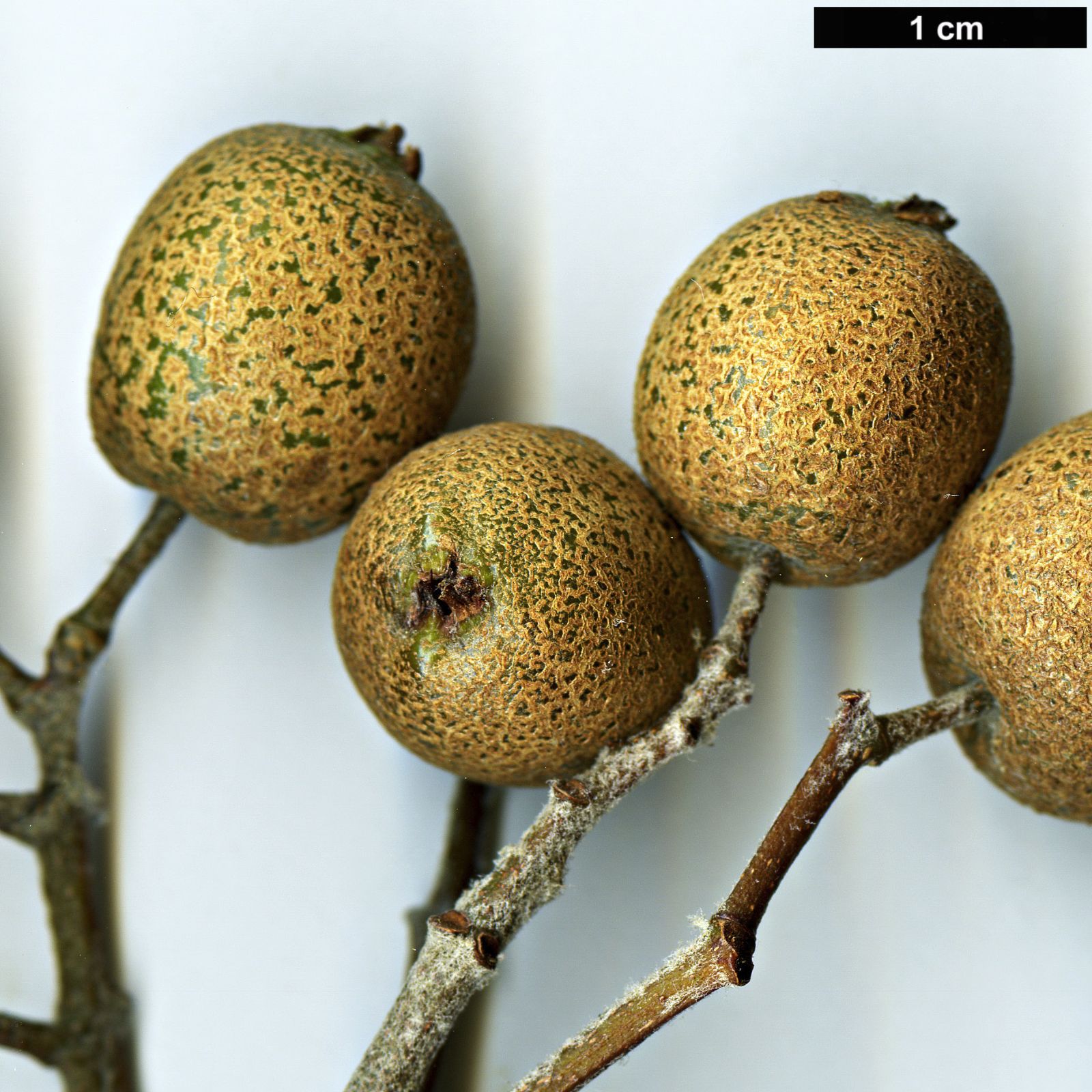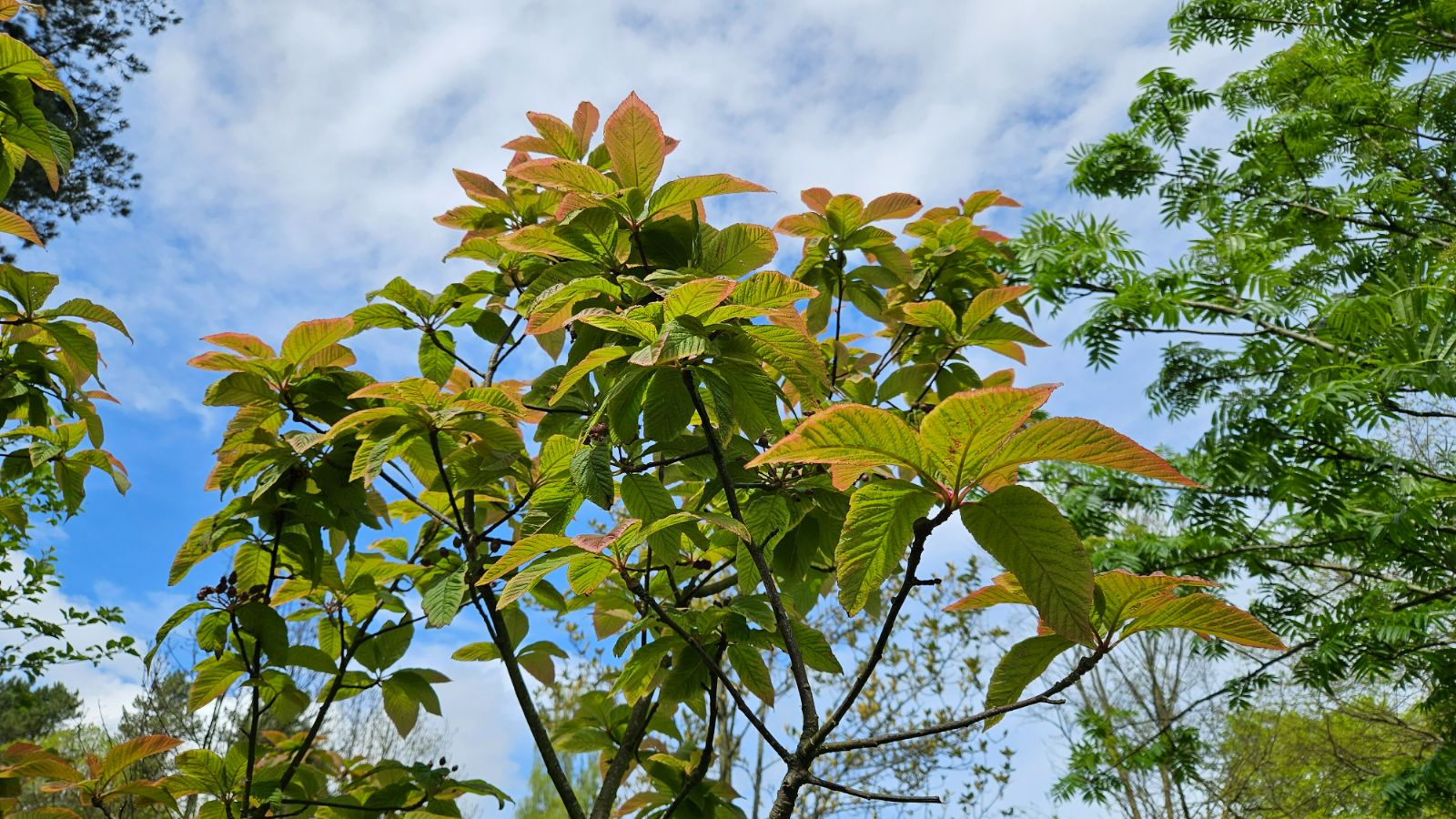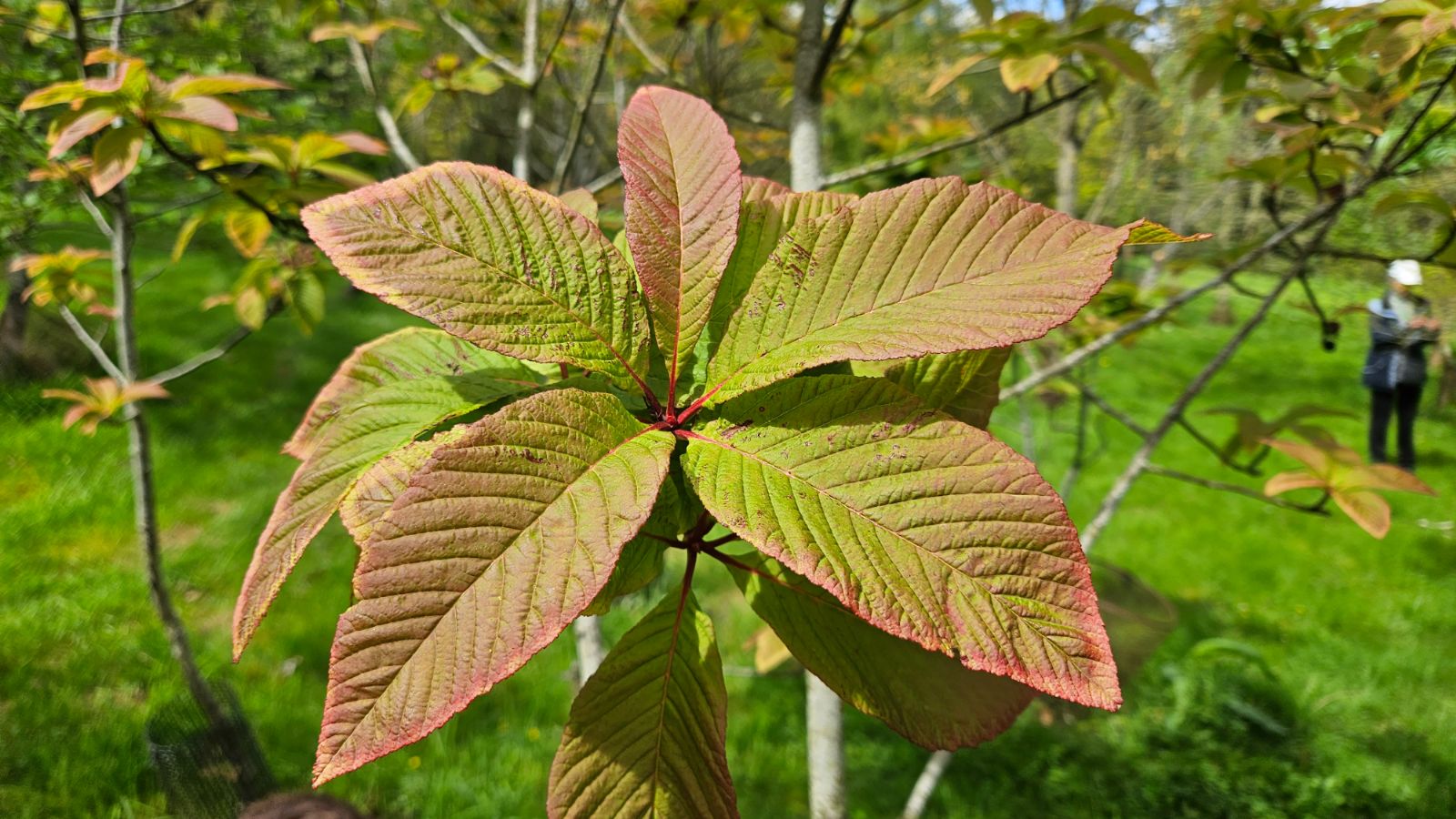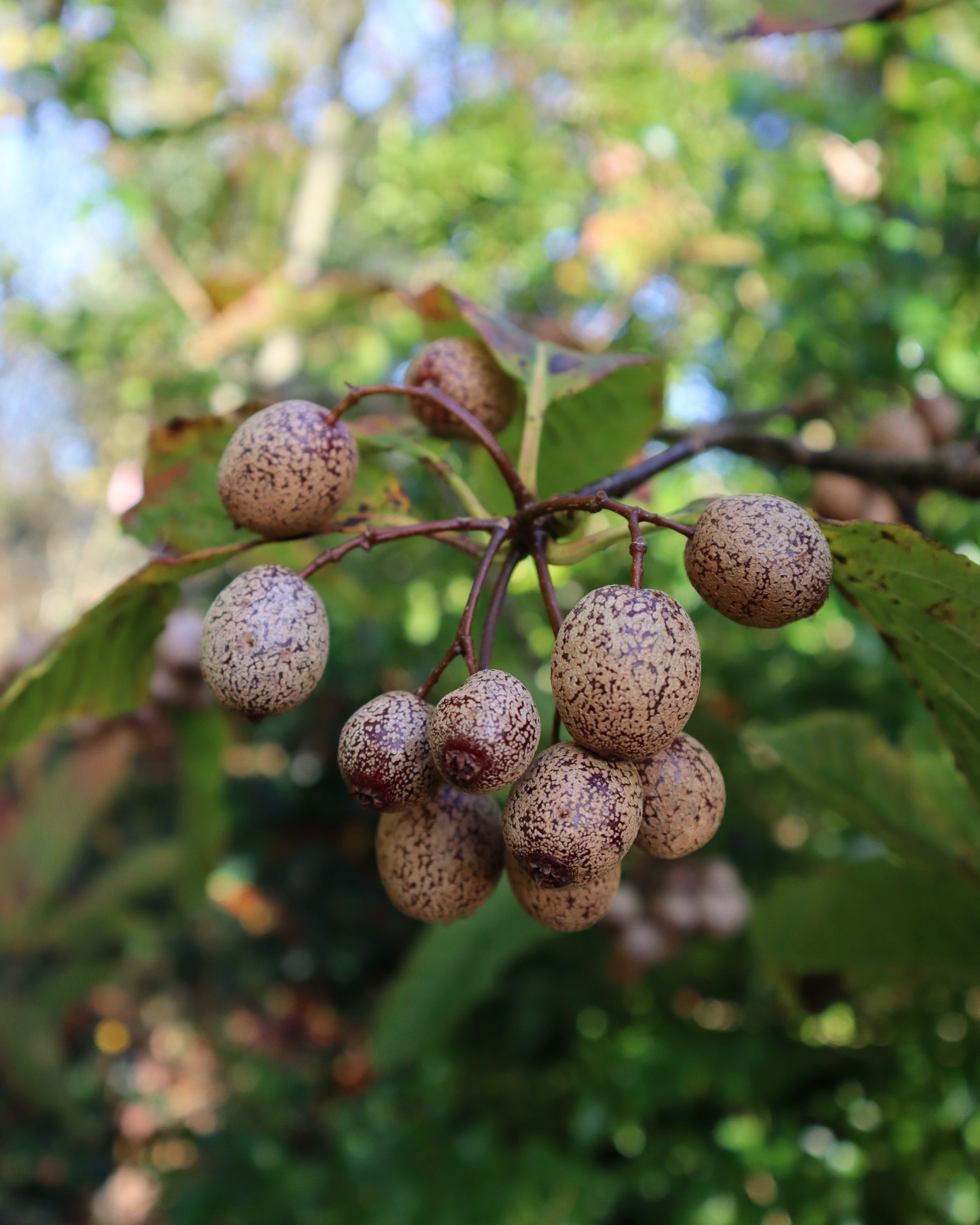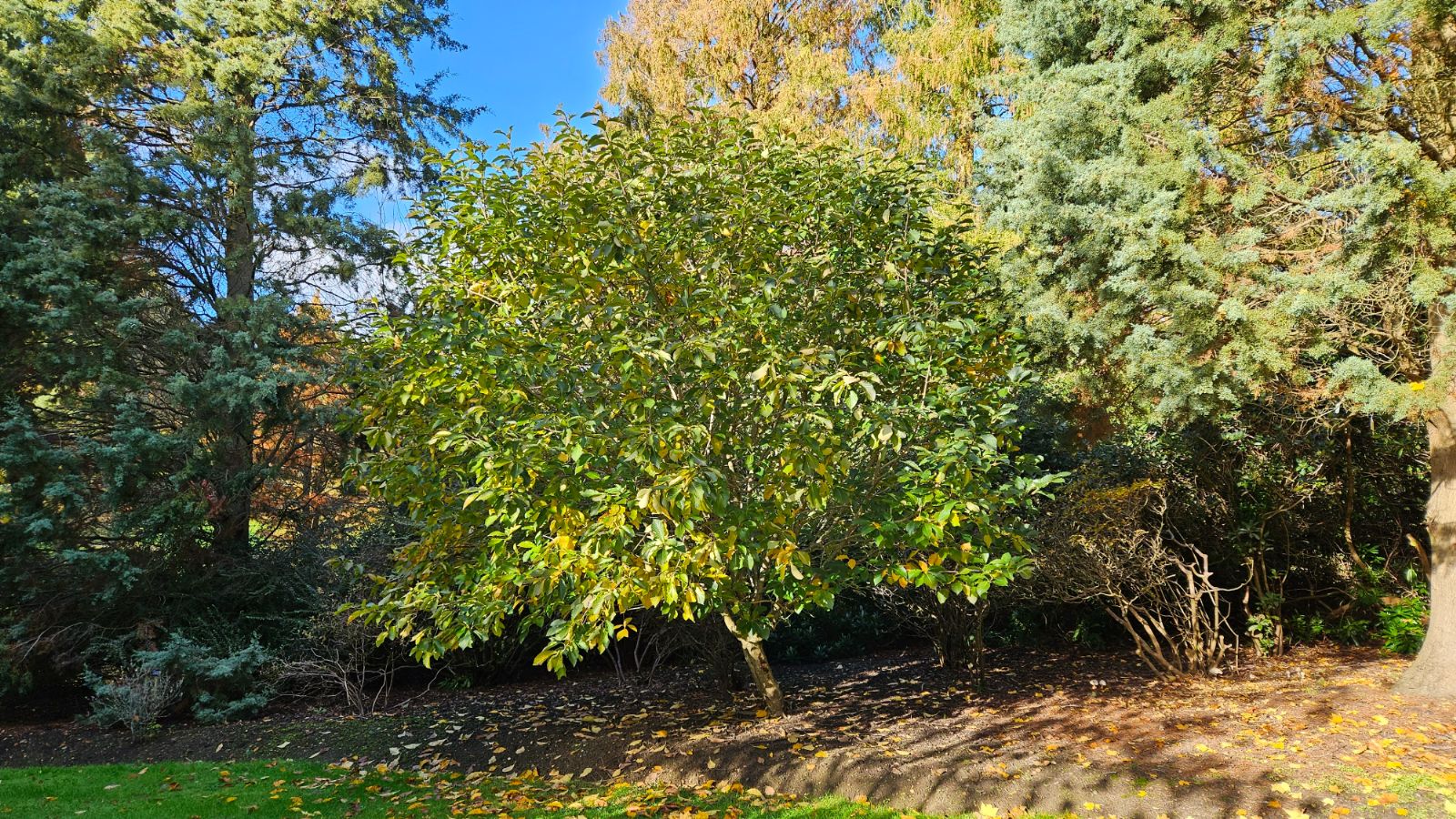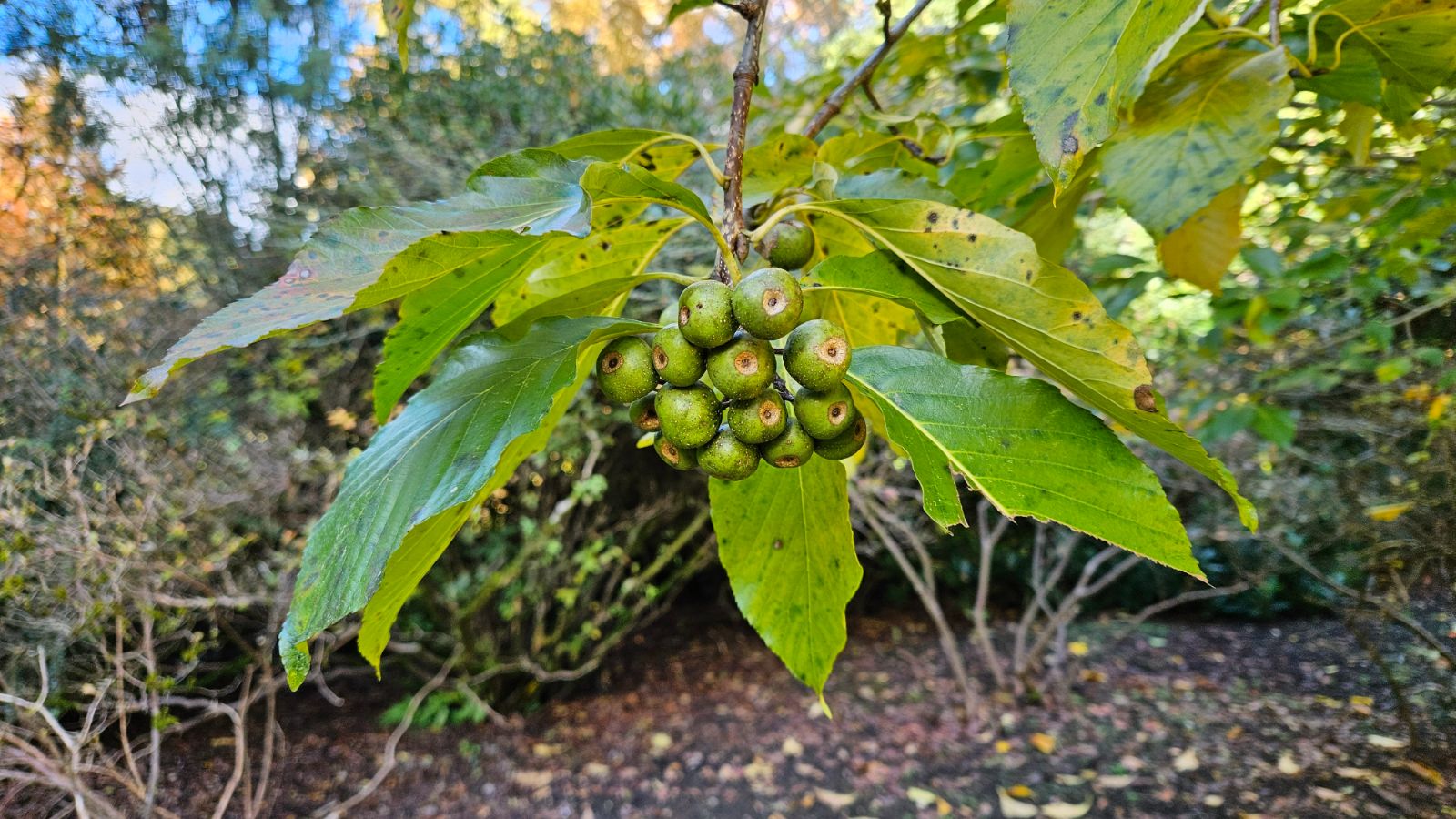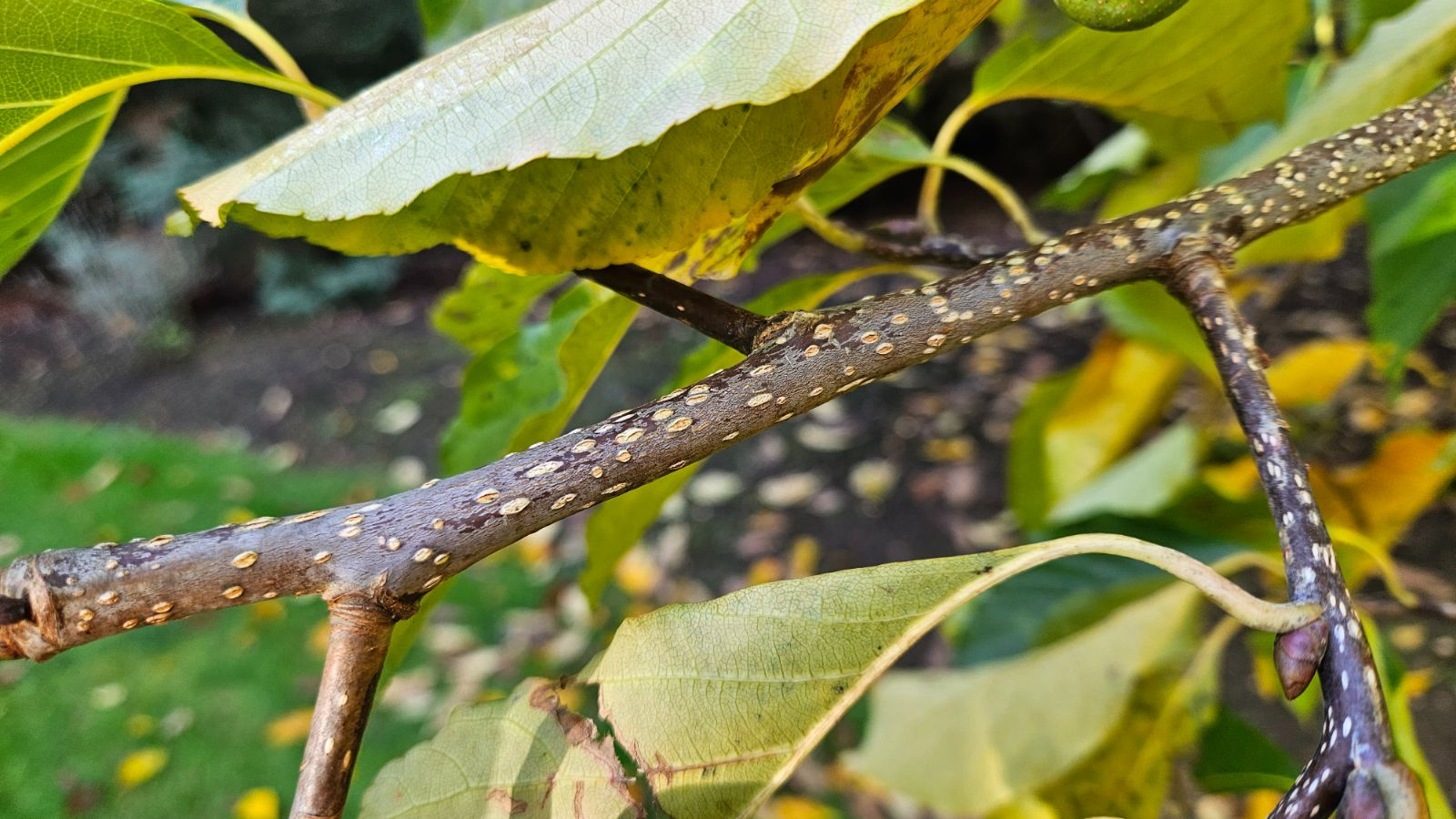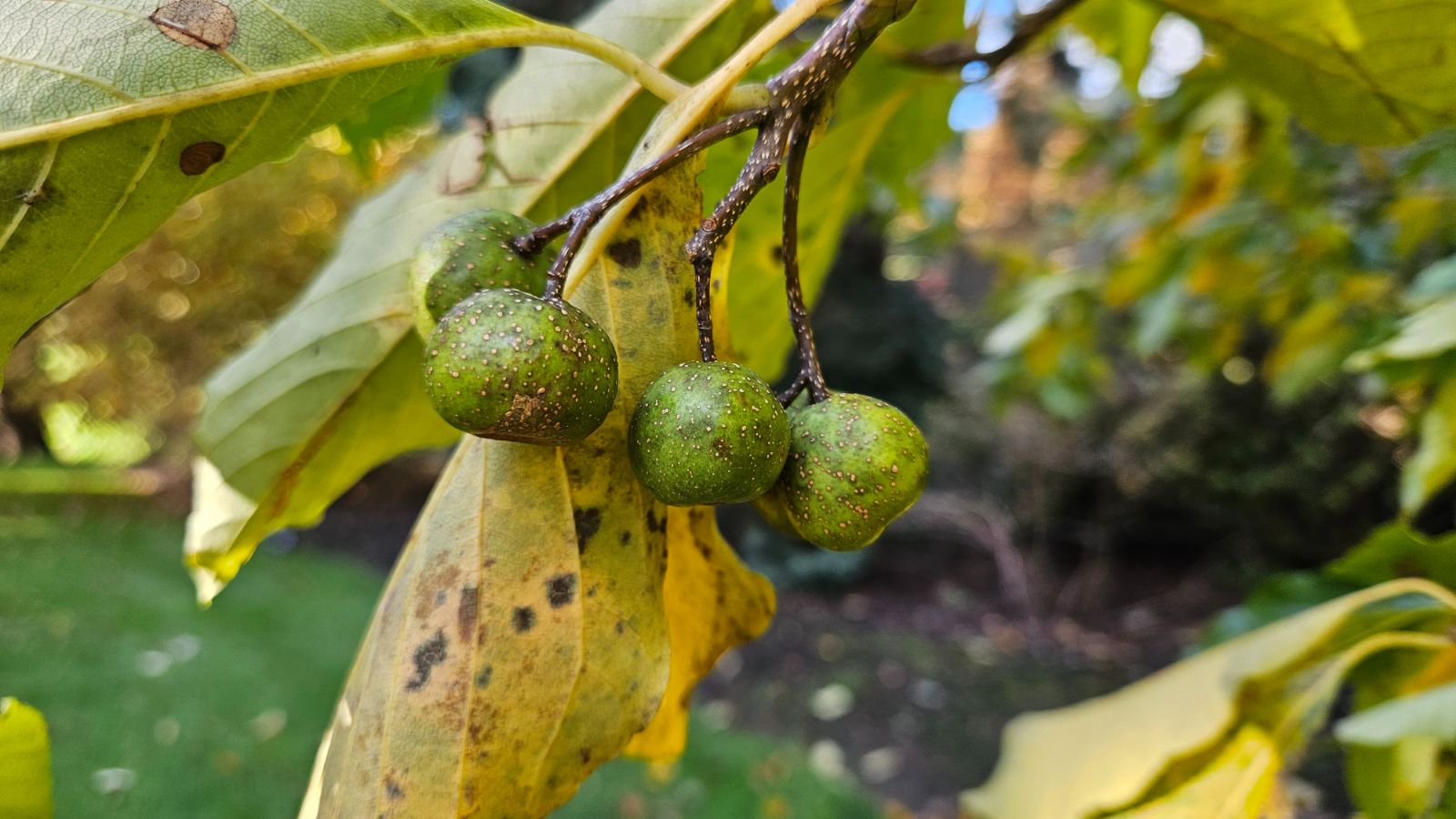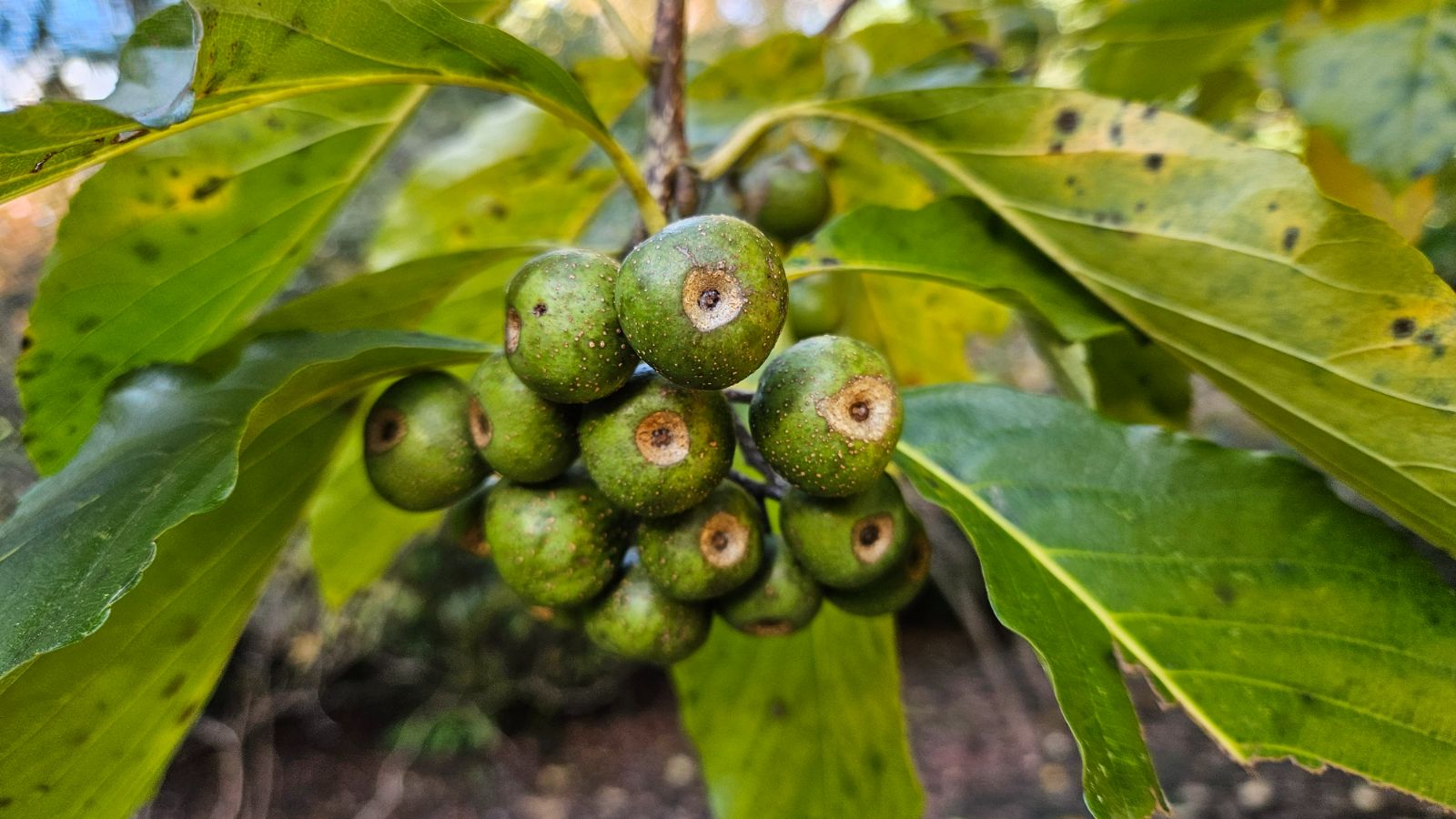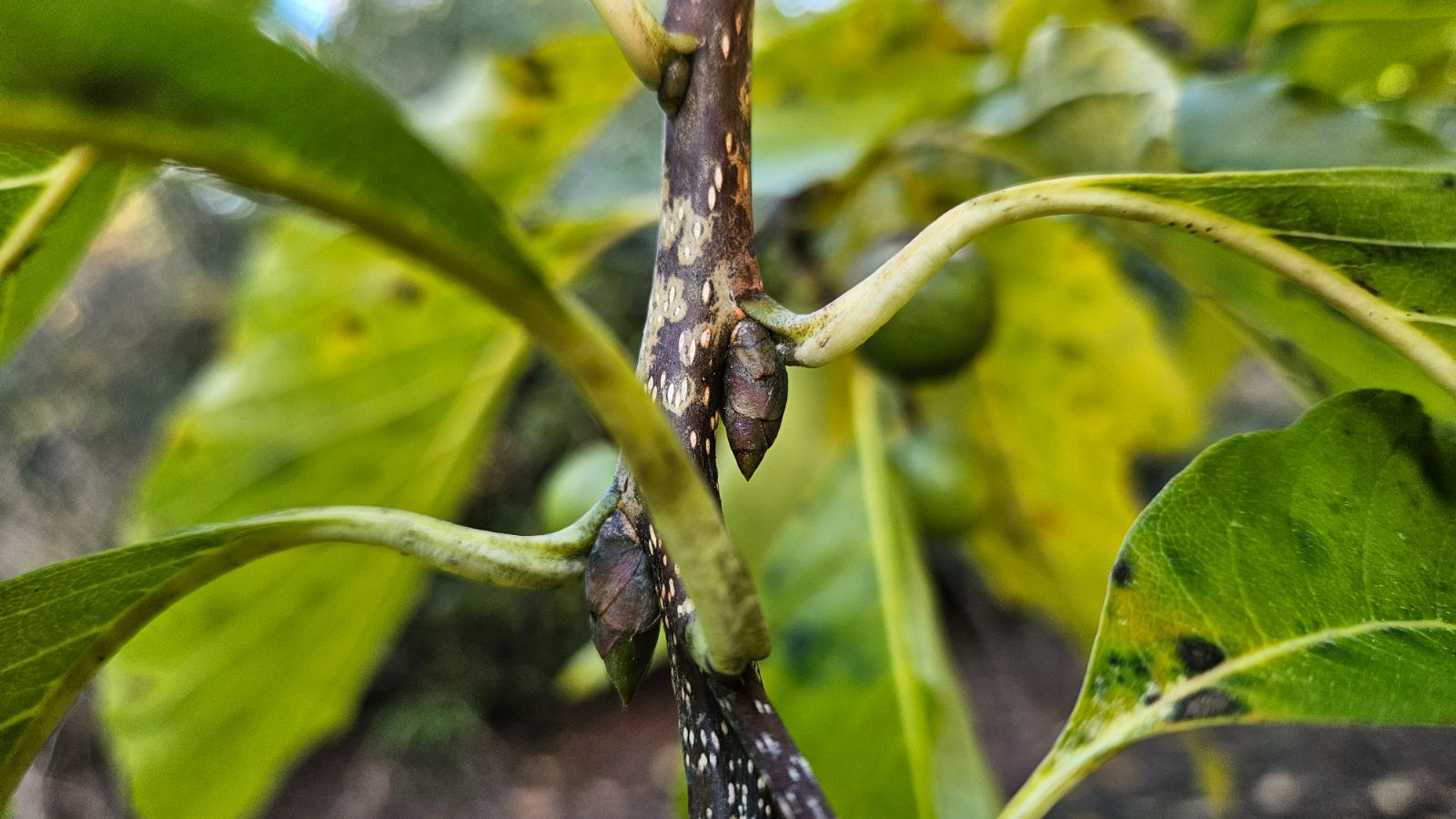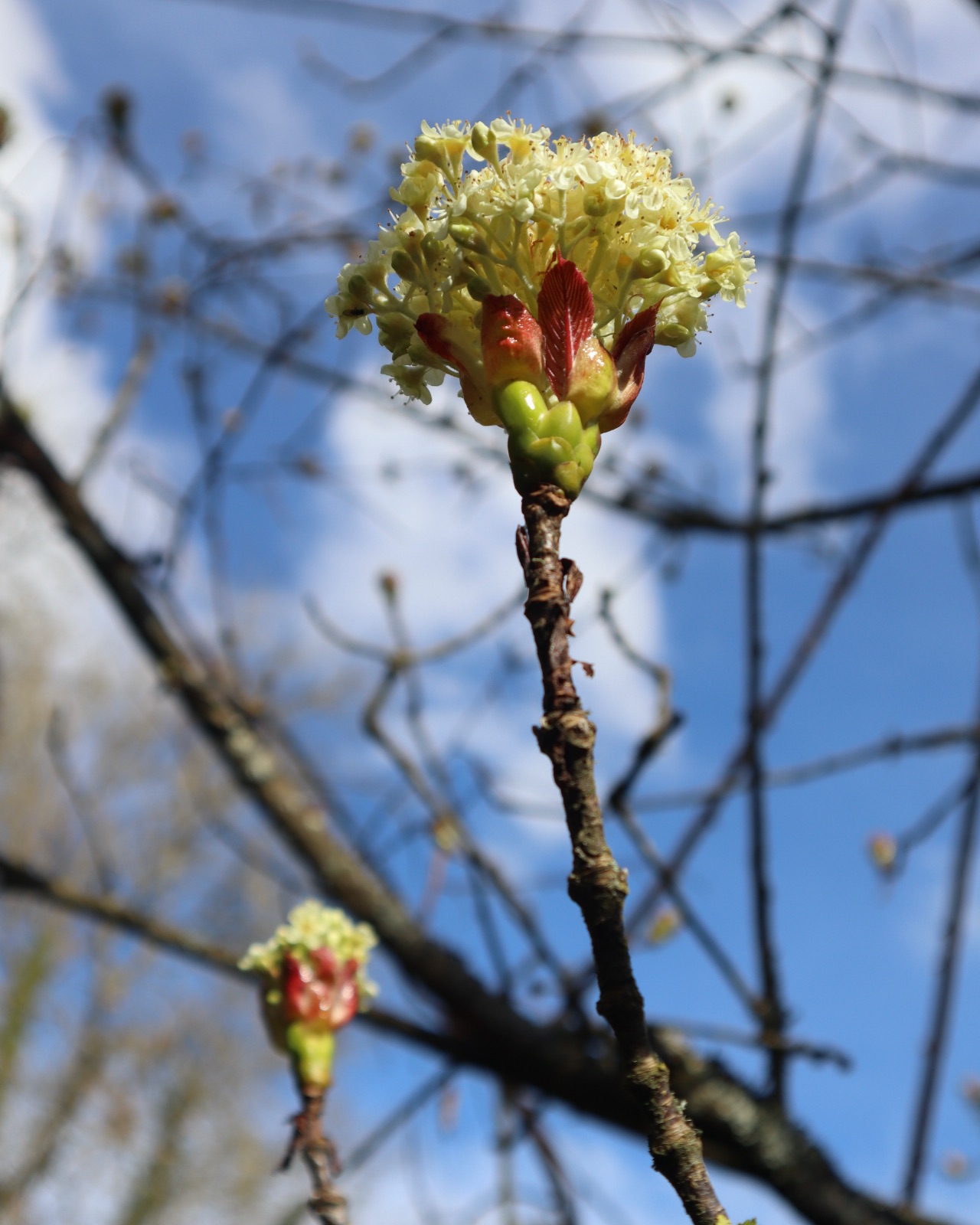Wilsonaria megalocarpa
Credits
Article from Bean's Trees and Shrubs Hardy in the British Isles
Recommended citation
'Wilsonaria megalocarpa' from the website Trees and Shrubs Online (treesandshrubsonline.
Genus
Synonyms
- Aria megalocarpa (Rehder) H.Ohashi & Iketani
- Micromeles megalocarpa (Rehder) Mezhenskyj
- Pyrus megalocarpa (Rehder) Bean
- Sorbus megalocarpa Rehder
Editorial Note
The text below is that of Bean (Bean 1981) who discussed this taxon under the name Sorbus megalocarpa. We have created this hybrid article – Bean’s text under the correct modern name, with appropriate synonymy – whilst we await sponsorship to enable a full revision of this genus to be written. We are re-organising the Sorbus sensu lato articles in this way to enable a new revision of Sorbus sensu stricto to commence in 2023, and to bring the nomenclature of this complex group of plants up to date in line with modern treatments.
The taxon discussed below as var. cuneata Rehder is sunk into the species main by Plants of the World Online (2023) but when he described Wilsonaria, Rushforth (2018) considered ‘var. cuneata’ sufficiently distinct to justify recognising it at species rank, for which the valid name would be W. guanxianensis (T.C.Ku) Rushforth. Consequently, no valid combination exists for var. cuneata within Wilsonaria. Until this issue is resolved we retain Bean’s text below under the name W. guanxianensis, with appropriate synonymy, as this is the only valid name available.
TC, August 2023.
A small tree up to 25 ft high or a large shrub; young shoots stout, glabrous, reddish, becoming later dull purple, freely marked with lenticels; winter-buds very large, ovoid, 1⁄2 to 3⁄4 in. long, viscous and shining. Leaves narrowly oval, sometimes obovate or ovate, broadly wedge-shaped or sometimes rounded at the base, finely and closely toothed, 5 to 9 in. long, 2 to 41⁄2 in. wide, veins parallel, in fourteen to twenty pairs, glabrous on both surfaces except that when young there are tufts of down in the vein-axils; stalk 1⁄2 to 1 in. long. Corymbs appearing with or even before the unfolding leaves 4 to 6 in. wide, 3 to 4 in. high, carrying numerous flowers each 3⁄4 in. wide. Petals dull white, round, 1⁄4 in. wide. Sepals broadly triangular, pointed, 1⁄12 in. long, glabrous inside, woolly outside, persisting at the top of the fruit. Styles three or four, united below the middle. Flower-stalks woolly when young. Fruits egg-shaped, 3⁄4 to 11⁄4 in. long, up to 7⁄8 in. wide, russet-brown, minutely wrinkled. Bot. Mag., n.s., t. 259.
Native of W. Szechwan, China; introduced by Wilson for Messrs Veitch in 1903. It has larger fruit than any of the Aria section except S. lanata and in foliage is one of the finest. The bark of the branchlets is very dark and its winter buds are remarkably large. It is quite hardy but, on account of its early growth, is liable to injury by spring frosts. The fruits have no beauty but the foliage occasionally turns a good red.
Wilsonaria guanxianensis (T.C.Ku) Rushforth
Synonyms
Aria megalocarpa var. cuneata (Rehder) H.Ohashi & Iketani
Micromeles guanxianensis (T.C.Ku) Mezhenskyj
Pyrus guanxianensis (T.C.Ku) M.F.Fay & Christenh.
Sorbus guanxianensis T.C.Ku
Sorbus megalocarpa var. cuneata Rehder
Editorial Note
This taxon was discussed by Bean (1981) as Sorbus megalocarpa var. cuneata. The text below is unaltered from Bean’s eighth edition, but we tentatively place this under the only valid name available, Wilsonaria guanxianensis, with appropriate synonomy, pending a full revision of this genus. Plants of the World Online (2023) does not consider this taxon to be distinct from W. megalocarpa, but when he described Wilsonaria, Rushforth (2018) considered ‘Sorbus megalocarpa var. cuneata’ sufficiently distinct to justify recognising it at species rank, for which the valid name is W. guanxianensis (T.C.Ku) Rushforth. Consequently, no valid combination exists for ‘var. cuneata’ within Wilsonaria and in order to retain Bean’s text we are obliged to use the name W. guanxianensis.
TC, August 2023.
Leaves narrowed at the base, very shortly stalked. Fruits smaller, about {1/2} in. long. Introduced by Wilson in 1910 for the Arnold Arboretum, and commoner in gardens than the typical state. As seen in cultivation the inflorescence is somewhat laxer than in the Veitchian introduction.

